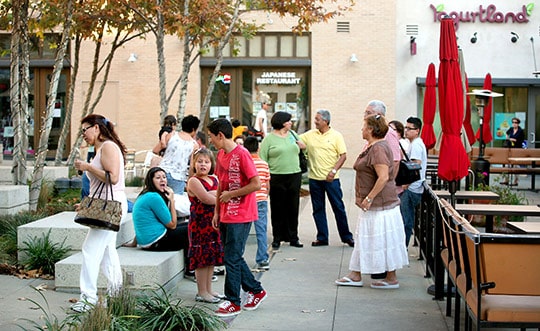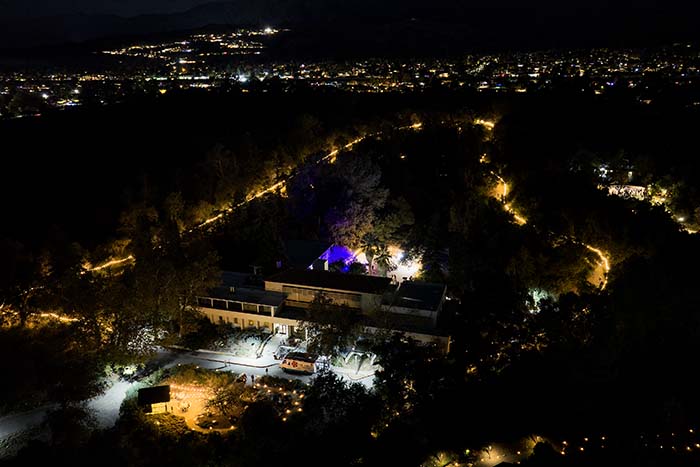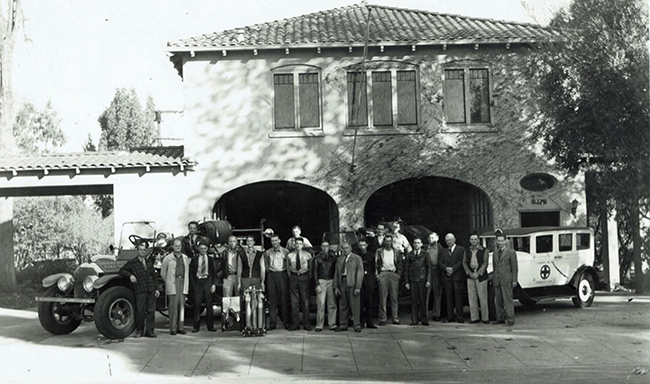Village South Specific Plan heads to city council

by Steven Felschundneff | steven@claremont-courier.com
Following an additional two weeks of review and a short list of requested tweaks, the Claremont Planning Commission approved the Village South Specific Plan and the associated final environmental impact report on Tuesday, passing the sweeping land use document on to the Claremont City Council for final adoption.
The commission continued its debate on the VSSP from the May 18 meeting, at which time the discussion went late into the night. However, on Tuesday the commission discussed the plan for less than 30 minutes before reaching its unanimous decision.
The Village South Specific Plan will rezone a 24-acre stretch of property south of the current Village extension set forth design and development guidelines for any construction within the plan area.
If approved by the city council, the zoning at the site will change from business industrial park, commercial highway and commercial professional to the new Specific Plan Area No. 15, Village South Specific Plan. In addition, a general plan amendment adds a new land use designation, Indian Hill/Village South transit-oriented mixed use, including a change to the land use map to show the entirety of the plan area as mixed use.
Under the VSSP, city planning staff along with the chief consultant Sargent Town Planning sought to create a seamless transition between the current Village and any new development in the plan area. This will include improving the pedestrian railroad crossing at Indian Hill Boulevard to make it more inviting as well as creating the “Village Core” plan area immediately south of the tracks that includes “a concentration of shops and restaurants anchored by the historic Vortox Building and public open space fronting Indian Hill Boulevard.”
The VSSP includes “ground floor retail and related commercial uses in key locations of the plan area, general office uses, a range of housing types, and a shared parking system that includes two or more new parking structures,” according to the city.
The site’s location near the Metrolink station and the proposed Gold Line extension makes it ideal for transit oriented developments that encourage walking and riding bicycles over using automobiles. Maximum build out for the site could include 1,000 residential units, a 55-room hotel and 100,000 square feet of retail. However, those are just estimates. The true number of units and retail space will be determined once a developer submits a plan.
The plan area in its current state can be described as a “super block” due to the fact that the entire site has no cut through streets and is approximately 900 by 550 feet. To create a “walkable block structure” the area will be divided into smaller blocks that are more like the existing Village, including paseos and possibly even carless streets. Santa Fe Street will be relocated and Green Street will be extended through the plan area with a traffic signal where it crosses Indian Hill. Traffic calming measures will be added to Indian Hill including adding medians, wider sidewalks and trees.
What won’t change, at least not right away, is the number of traffic lanes on Indian Hill between Arrow Highway and First Street.
In May, several commissioners expressed interest in eliminating one lane for automobiles on Indian Hill through the plan area and adding a bike lane. The idea came up again on Tuesday when Chair Leigh Anne Jones asked if staff could restripe that portion of the street, temporarily reducing it to one lane in each direction, as a test of sorts.
Planning staff expressed reservations about that idea, citing the significant back ups that occur currently whenever a train is at the Claremont station and the crossing gates are down. Eliminating one lane could extend the backup all the way to Arrow, potentially causing a traffic hazard.
Community Development Director Brad Johnson said the idea has been discussed for five years and city traffic engineers have “serious concerns” about the queuing of traffic. Principal Planner Chris Veirs said there would need to be a traffic study before the striping experiment was initiated just to ensure it was not “a complete nightmare out there from day one.”
The VSSP has plenty of detractors, although none were on the record Tuesday because the public comment period concluded during the previous meeting. Some have complained about the increased density and dearth of parking spaces. Recently concerns about subterranean toxic chemicals have surfaced.
The public will have plenty of opportunities to express their reservations including when the plan comes before the city council, which is expected to happen later this month.
The draft environmental impact report identified 15 topic areas to analyze for potential impacts to the existing environment and determined that five were potentially significant including: cultural resources such as substantial changes to the Vortox building and other historical structures; uncovering subsurface contaminants; construction noise; construction traffic including detours and tribal resources at the site.
Mitigation measures would include evaluation reports and documentation before a historical building can be altered or demolished; soil and vapor testing including a phase II environmental site assessment and removal of underground storage tanks; approval of a construction noise reduction plan; approval of a construction management plan to address detours and construction traffic; and tribal consultation.
These mitigation efforts reduce all potentially significant impacts to “less than significant” status, according to a staff presentation.
If the council approves the specific plan later this month, the development team, Village Partners and Arteco Partners, are poised to begin the application process on a project called South Village. The development will encompass 12 acres anchored by the historic Vortox building at the corner of Satnta Fe Street and Indian Hill boulevard and including the former Hibbard Chevrolet dealership.
“South Village is envisioned as Claremont’s next great neighborhood, a walkable and rollable, low-carbon district that brings the amenities and vibrancy of the Village to South Claremont,” the developer wrote on its website.
They plan a “vibrant and sustainable South Village neighborhood” that will include housing, retail storefronts and office space, as well as an interconnected network of walkable streets and paseos, plus a public plaza and park.
The people behind South Village plan to construct a variety of housing options including both rentals and for-sale units that will focus on single-level flats. In compliance with the city’s inclusionary housing ordinance, 15 percent of the units will be “affordable” but there are no details at this point about how many, if any, will be for low income residents. The city council intends to revisit the inclusionary housing ordinance this year, which could shape the number of units that ultimately go to low income families.
The public got its first look at what the developer would like to build during a block party in September of 2019.










0 Comments